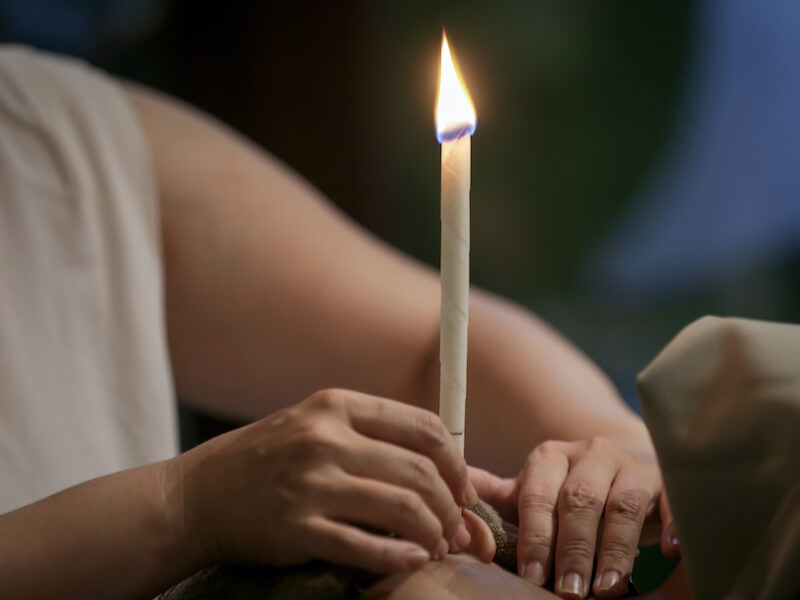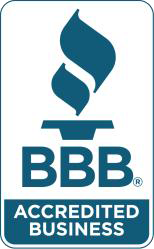
Everyone loves a quick fix, especially when the solution is also a DIY fix. Got a leaky sink? You can learn about how to fix that from a YouTube video. A plumber would probably be a little more efficient but then you wouldn’t get that sense of self-satisfaction that comes with doing it on your own.
But that feeling only lasts until your sink begins leaking again. Because, as it so happens, in some cases a DIY fix is no substitute for the well-honed skills of a professional.
Sometimes, that’s difficult to admit. And, in part, that’s why people will often continue to seek out “easy” DIY-fixes for intricate problems, which might help explain the popularity of something called ear candling (or, in some cases, earwax candling). It doesn’t really sound that appealing, does it? So, exactly what is ear candling, and how is it maybe not the best thing ever? Well, let’s get into that.
Ear candling – what is it?
Have you ever had a plugged-ear sort of feeling? In some cases, your ear will fill with mucus when you’re ill. In other cases, it might happen because you have a surplus of earwax in your ears (and surplus earwax can have any number of causes). When this occurs, you may experience some discomfort. You may even experience a temporary loss in your ability to hear. It sort of stinks!
Some individuals, because of this, believe that ear candling is just the cheap and novel solution they need. The concept is that a special hollow candle is placed in your ear (non-burning end). Somehow, the combination of heat and the hollow style of the candle changes the air pressure inside of your ear canal, drawing the earwax or mucus out.
It should be quickly recognized that ear candling isn’t advocated by healthcare professionals. Do ear candles really pull wax out? No. There’s positively no proof that ear candling works (especially not in the way that it’s claimed to work). Essentially, most hearing and healthcare professionals will emphatically recommend against ever utilizing this technique. (Does ear candling help with sinus pressure? Also no.)
Just listen to the FDA! (What is the FDA advising about ear candling? Essentially, don’t do it!)
The drawbacks of ear candling
At first, ear candling might seem completely safe. It’s a really small flame. And you’re using “specialized” equipment. And people on the internet claimed it was safe! So how could it be possible for ear candling to be dangerous?
Unfortunately, there’s no mistaking the fact that ear candling can be downright dangerous. What negative impacts can ear candling have? Here are just some of the (potentially painful) ways that ear candling can affect your health:
- You can jam that earwax even further up into your ear: In much the same way that pushing a Q-tip in your ear can pack the earwax into an ever-more-dense blockage, so too can sticking a specialized candle in your ear. Your earwax problem can be worsened by earwax candling, in other words! Other complications, from hearing loss to ear infections can also be the result.
- Your face could be seriously burned: Look, any time you’re positioning candles that close to your face, there’s a strong possibility you’ll burn yourself. Accidents will happen! It’s all too easy for candle wax to trickle into your eyes or for your hair to catch on fire or for your face to become seriously burned.
- Your Eardrum may accidentally get punctured: Whenever you put something into your ear, you put yourself in danger! You may accidentally pierce your eardrum, causing significant discomfort and damage to your hearing. If this takes place it’s very likely that you will have to get professional assistance.
- You can leave candle wax behind in your ear: The candle wax can get left behind in your ears even if you don’t get burned. This leftover wax can cause serious discomfort and, eventually, impact your hearing.
- Your ear can be seriously burned: The fire and the melting ear candle wax are very hot. If the candle tips or the wax goes into where it’s not supposed to, you’re facing some substantial burning possibilities in your ear (and your ear is a sensitive location).
So, is ear candling recommended by hearing healthcare professionals? No… not even a little! Not only is ear candling not practical, it’s actually very dangerous!
A better way to manage earwax
Ear wax is usually rather healthy. It’s helpful for your ears in normal quantities. Problems start when there’s an overabundance of earwax or when it won’t drain effectively. So what should you do if making use of a candle is a bad idea?
Seek advice from a hearing specialist if you have a stubborn earwax obstruction. They might recommend some at-home alternatives (like using saline or mineral oil to soften the wax, allowing it to sort of run out on its own). But they might also clean out your ear while you’re in the office.
We can get rid of the wax safely with specialized tools and training.
In general, you should avoid techniques such as utilizing cotton swabs and earwax candling. Unless your hearing specialist says differently, it’s a good plan to never put anything smaller than your finger in your ear.
How to help your ears feel better
If accumulated earwax is causing you a little discomfort or misery, you should schedule an appointment with us. We can help you get back to normal by clearing away any stubborn earwax.
References
https://www.fda.gov/consumers/health-fraud-scams/ear-candling-ineffective-and-risky
The content of this blog is the intellectual property of MedPB.com and is reprinted here with permission.
The site information is for educational and informational purposes only and does not constitute medical advice. To receive a personalized free hearing test and hearing loss consultation, call today to set up an appointment.









